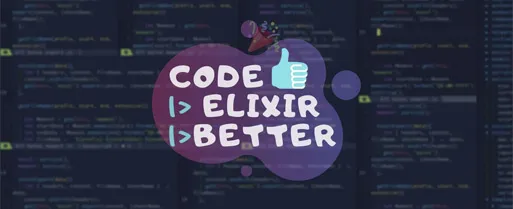
Krupananda
Senior Software Engineer
Elixir's lightweight process model, built on the Erlang VM (BEAM), is one of the most compelling reasons to adopt the language for building fault-tolerant and scalable systems. Processes in Elixir are lightweight, isolated, and designed for concurrency, enabling software engineers to create resilient, distributed applications.
This blog explores the key aspects of working with processes in Elixir, focusing on:
- Creating Processes
- Monitoring Processes
- Linking Processes
By the end of this article, you'll have a strong foundation for designing robust Elixir applications using processes.
1. Creating Processes: Laying the Foundation
Processes in Elixir are independent, isolated units of execution. Each process has its own memory, state, and execution context, making it possible to run thousands (or even millions) of them concurrently. When you create a process, you isolate responsibilities and reduce the risk of failures affecting the whole system. Elixir provides spawn/1 and spawn/3 functions to start processes.
How to Create Processes
pid = spawn(fn ->
IO.puts("Hello from Process #{inspect(self())}")
end)
Here, spawn/1 starts a new process that executes the given anonymous function. The function runs independently of the caller, and pid is the process identifier (PID) of the newly created process.
Example 2: Starting a Process with spawn/3
defmodule TaskProcessor do
def process(task_id) do
IO.puts("Processing task: #{task_id}")
end
end
pid = spawn(TaskProcessor, :process, ["task_123"])
In this example, a process is started that runs the TaskProcessor.process/1 function with the argument "task_123". This pattern is useful when modularizing functionality.
Key Characteristics of Processes
- Isolation Each process has its own state and memory, preventing data corruption between processes.
- Concurrency Processes run independently, allowing parallel workloads to maximize CPU utilization.
- Resilience A failure in one process does not impact others.
Real-World Use Cases
- Background Jobs Use processes to execute tasks like sending emails or processing payments in isolation.
- Concurrent Workloads Divide a large computation into smaller parts and handle them in parallel processes.
2. Monitoring Processes: Keeping an Eye on Execution
In production systems, observability is critical. Monitoring processes in Elixir allows you to detect failures in real-time and respond accordingly. Using Process.monitor/1, you can observe the lifecycle of a process and take action when it terminates.
How Monitoring Works
When you monitor a process, Elixir sends a :DOWN message to the monitoring process if the monitored process exits. This allows you to track failures or normal completions.
Example: Monitoring a Process
defmodule MonitorExample do
def start do
parent = self()
pid = spawn(fn ->
Process.sleep(1000)
IO.puts("Task complete")
end)
Process.monitor(pid)
receive do
{:DOWN, _ref, :process, ^pid, reason} ->
IO.puts("Monitored process terminated. Reason: #{inspect(reason)}")
end
end
end
Why Monitoring Matters
- Failure Awareness Monitoring ensures you’re notified immediately when a process fails, allowing you to implement corrective measures.
- Graceful Recovery Based on the failure reason, you can decide to retry the task, log the failure, or raise an alert.
- Non-Intrusive Monitoring is one-way, meaning the monitored process is unaware of the observer.
Engineering Insights
- Use Monitoring for Critical Tasks Monitor long-running tasks (e.g., polling APIs or processing database jobs) to ensure reliability.
- Integrate with Supervisors Combine process monitoring with supervisors to restart failed processes automatically.
3. Linking Processes: Sharing Responsibility
In some cases, processes are tightly coupled—when one fails, the other should fail too. For example, if a task in a pipeline fails, the entire pipeline may need to stop. This is where process linking comes in.
What is Process Linking?
Linked processes are bi-directionally connected, meaning if one crashes, the other will also crash. This behavior is ideal for processes that share responsibilities and must be restarted together.
Example: Using spawn_link/1
defmodule LinkedExample do
def start do
spawn_link(fn ->
IO.puts("Starting a linked process")
exit(:failure) # This will terminate both the child and the parent
end)
Process.sleep(2000)
IO.puts("This will never run because the parent also crashes")
end
end
Handling Linked Failures Gracefully
If you want to prevent cascading failures, you can enable exit trapping using Process.flag/2. When a linked process crashes, the parent process will receive an :EXIT message instead of crashing.
Example: Trapping Exits
defmodule TrapExitExample do
def start do
Process.flag(:trap_exit, true)
spawn_link(fn ->
IO.puts("Linked process exiting with error")
exit(:error)
end)
receive do
{:EXIT, _from, reason} ->
IO.puts("Linked process exited. Reason: #{inspect(reason)}")
end
end
end
Why Linking is Useful
- Crash Propagation In some cases, failing processes should bring down dependent processes to avoid inconsistent states.
- Supervision Supervisors in Elixir use process linking to monitor child processes and restart them if needed.
Building Resilient Systems with Processes
Elixir processes provide the foundation for building fault-tolerant applications. However, they are even more powerful when combined with OTP constructs like Supervisors and GenServers.
Conclusion
Elixir processes form the backbone of robust, scalable, and fault-tolerant systems. By mastering the creation, monitoring, and linking of processes, software engineers can harness the full power of concurrent programming. When combined with OTP constructs such as Supervisors, Elixir becomes a powerful tool for building resilient applications. Understanding these concepts equips engineers to design systems capable of handling real-world challenges effectively.









